Biofloc technology and water quality considerations
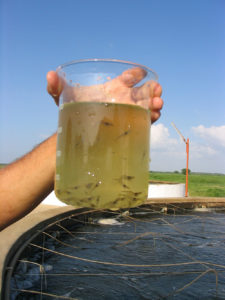
In the last decade biofloc technology (BFT) has become commonly used in intensive shrimp culture systems, including nurseries. BFT has various significant advantages regarding water quality and nutrition for the young shrimp in nursery systems, including the potential for controlling nitrogenous wastes without a need for water exchange or external biofilters; the contribution of biofloc to the nutrition of the animals; and its diverse microbial community frequently can frequently displace/exclude pathogenic microorganisms. There is a common misconceptions about biofloc, that they are zero exchange systems, but a limited exchange for removal of excess biofloc is required to keep these systems stable. Also, that sterilized/pasteurized/disinfected molasses or sugar must be added to maintain a biofloc, but biofloc systems can be managed with little or no sugar or molasses, and in fact, bioflocs maintained with less sugar input are often more stable.
The control of nitrogenous wastes is accomplished through the management of bacterial populations in the water. Autotrophic systems are green water or plankton-dominated, with phytoplankton, macro-algae and/or nitrifying bacteria that can get their carbon source for ammonia conversion from sources other than carbohydrates. This is also considered a highly variable source of food and should not be considered when calculating total feed requirements. Algae-based systems have a highly variable effect on O2, CO2 and pH levels. A high pH (over 8.5) can cause ammonia to be in a toxic form and should be avoided in low water exchange systems. In heterotrophic systems, water management is based on low or zero water exchange with bacteria dominating the microbial population, and a proper C:N ratio is essential for floc formation and ammonia consumption. For high protein diets that contribute high levels of nitrogen into the system, often additional carbohydrate sources must be added to maintain the correct ratio. Bioflocs can contribute significant nutrition to shrimp, but should not be considered a reliable, constant predictable source of food in management of these systems.
To establish a biofloc, the following procedure is recommended by well-known shrimp farming and biofloc expert Dr. Tzachi Samocha:
- Add a probiotic like EZ Bio daily, beginning before the start of the production cycle;
- At the start of the production cycle, add sugar in proportion to the amount of feed added (30 percent);
- Measure all forms of nitrogen (NH4-N, NO2-N, NO3-N) daily.
When nitrate appears, gradually begin decreasing the amount of sugar added, eliminating it in about five to seven days. This procedure results in a biofloc composed of both heterotrophic bacteria and autotrophic bacteria – called a mixotrophic system, which are more stable with lower TSS levels and lower oxygen demand. Maintaining this system requires reduction in light intensity to about 70 percent. Appropriate carbon additions are important, requiring adequate estimates of nitrogen according to feed protein, and proper determination of the proportion of ammonia to be made available to the heterotrophic bacteria.
Probiotics are another important addition to the system, and provide significant benefits to water quality (by initiation of the biofloc, digestion of organic material, and reduction of ammonia levels) and in disease control (by production of antimicrobial agents and by exclusion of pathogens).
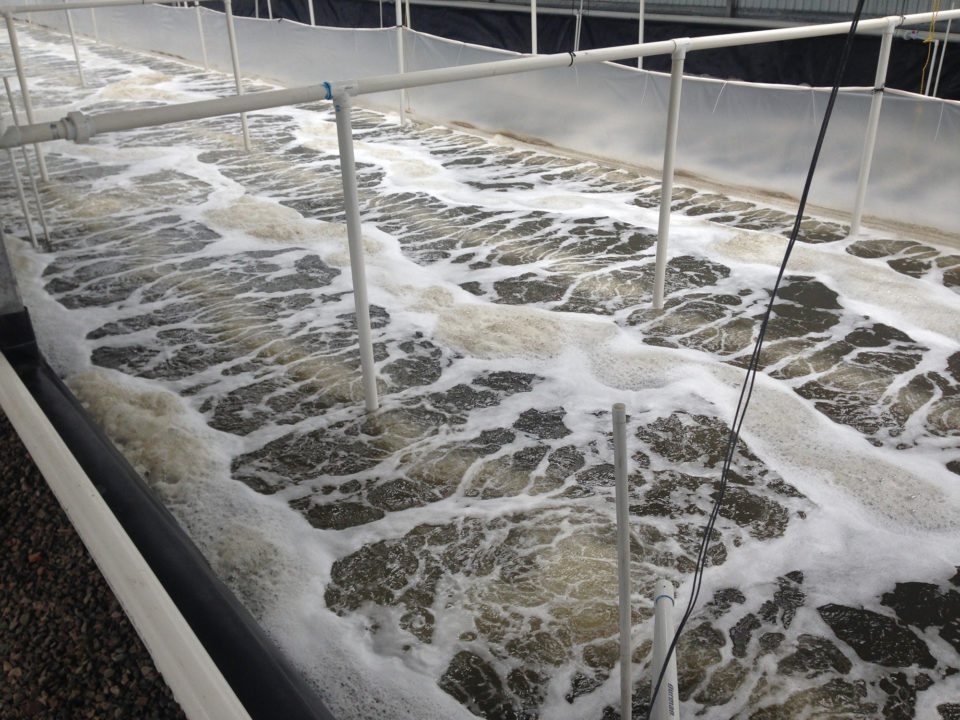
Water quality considerations
Shrimp nursery systems require the best water quality possible, and ideally from the same source as is used in the grow-out production ponds. Water should be pumped into reservoir tanks and properly treated. Most nursery systems should implement at least some degree of filtration and disinfection of incoming water, including sand filtration, cartridge filtration (5-50 microns; layers of 1 micron, big-sized filter bags are highly recommended) and chlorination (20-30 ppm).
De-chlorination can be accomplished by aeration or addition of thiosulfate, but the later approach is discouraged because of possible detrimental effect of the chemical to the animals. When feasible, either use vitamin C addition or natural de-chlorination with aeration as the best approach. Nurseries requiring the highest levels of biosecurity implement additional post-filtration of incoming water, including the use of ozone or U/V sterilization, activated carbon filter and final cartridge filtration.
Support equipment for nurseries must include properly-sized incoming water pump(s) and distribution pipes and blowers with sufficient capacity and emergency back-up power; generator and diesel-powered units as an additional layer of security if electricity and generator(s) fail. And typically installed to run only the air blowers. Round tanks usually use one 0.5-1 hp blower for each 100-m3 of tank volume. Rectangular tanks usually use 2-3 hp blowers per 100-m3 of tank volume. Newer designs are using venturis or air injectors that both aerate and circulate the water without the need for any blowers. These newer designs require lower initial capital investments and have lower operating costs while increasing the system’s carrying capacity.
Shrimp nurseries operate at very high animal densities and biomass, imposing continual monitoring of various critical water quality parameters, animal health and other variables. Essential equipment includes DO meters; a spectrophotometer/colorimeter for determinations of NH3, NO2, alkalinity, free chlorine and H2S; refractometers/salinometers; thermometers; pH meters; and ORP meters. Monitoring ionic balance is also recommended, including for calcium, magnesium and potassium if using lower salinity water. In addition, weighing scales and sampling equipment for animals, and automatic feeders and feed trays. Power backup systems and oxygen bottles – and oxygen-producing chemicals like H2O2 and KMNO3 – are other critical components to include in the design of these systems, in case of power failures. Larger and more complex nurseries can also have an automated monitoring systems with a variety of sensors and alarms to promptly warn operators of system failures and issues.
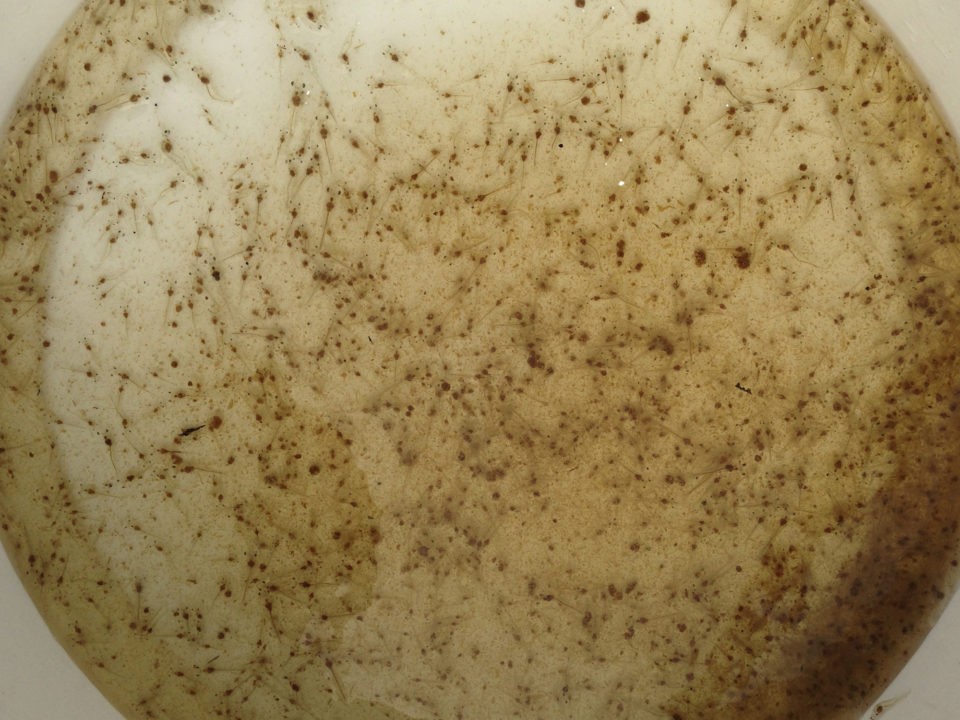
Proper water aeration is critical in shrimp nursery systems, not only providing oxygen to the shrimp for effective feed utilization and growth, but just as importantly for the oxidation of the liquid, solid and gaseous waste of the system. Water aeration, circulation and circular flow in the tanks and raceway systems may be provided by various equipment, including spray bars from high pressure pumps, nozzles and/or by airlift pumps, and paddlewheels. The latter can be used in phases 2-3, but are discouraged for phase-1 systems due to potential physical damage to the young shrimp. Systems using both spray bars and airlift pump systems have the advantages of redundancy if either the water pumps or air blowers have mechanical failures.
Along with proper water temperature (normally not an issue in indoor systems), dissolved oxygen (DO) is the most important water quality parameter. It must be maintained at or above 4 ppm; however, 6 ppm is the optimum level for better animal growth and should ideally be measured at least 12 times per day. Instances when DO levels are less than 4 ppm typically require prompt measures like water exchange and sludge removal, suspension of feeding and probiotic treatments, and the addition of pure oxygen.
Management of nitrogen metabolites is another critical step. Low oxygen results in poor FCRs and reduced tolerance to ammonia. Ammonia is produced as a by-product of protein metabolism and is excreted across the shrimp’s gills (shrimp waste/feces are also sources of ammonia). Ammonia exists in two forms: NH3 (toxic) and NH4 (non-toxic). NH3 increases with increasing pH and temperature and is more toxic when the pH is above 8.6. Ammonia is converted into nitrite by certain nitrifying bacteria. High levels of nitrite interfere with oxygen uptake by the blood. Nitrite is more toxic for juvenile than for adult shrimp. Both ammonia and nitrite must be measured daily, and monitoring nitrate (NO3) is also recommended due to its role in oxidizing anaerobic bottom sludge and removal of H2S build-up. When a system is new, there is zero accumulation of NO3 and adding nitrate at this point is important. Without water exchange, there is a chance that anaerobic decomposing sludge will produce much harmful H2S.
In the third and last installment of this article, we will discuss feeds and feed management in shrimp nursery systems.
Now that you've reached the end of the article ...
… please consider supporting GSA’s mission to advance responsible seafood practices through education, advocacy and third-party assurances. The Advocate aims to document the evolution of responsible seafood practices and share the expansive knowledge of our vast network of contributors.
By becoming a Global Seafood Alliance member, you’re ensuring that all of the pre-competitive work we do through member benefits, resources and events can continue. Individual membership costs just $50 a year.
Not a GSA member? Join us.
Authors
-
Craig Browdy, Ph.D.
Director of Research & Development
Zeigler Bros., Inc.
Gardners, PA 17324 USA -
Peter Van Wyk, M.A.
R&D Technical Manager
Zeigler Bros., Inc.
Gardners, PA 17324 USA -
Chris Stock, M.S.
Sales Manager - Eastern Hemisphere
Zeigler Bros., Inc.
Gardners, PA 17324 USA
www.zeiglerfeed.com -
Thomas R. Zeigler, Ph.D.
Senior Technical Advisor & Past President and Chairman
Zeigler Bros., Inc.
Gardners, PA 17324 USA
-
Ramir Lee
Technical Representative – Hatchery Feeds
Zeigler Bros., Inc.
Gardners, PA 17324 USA -
Diego Flores
Technical Representative – Hatchery Feeds
Zeigler Bros., Inc.
Gardners, PA 17324 USA
Tagged With
Related Posts
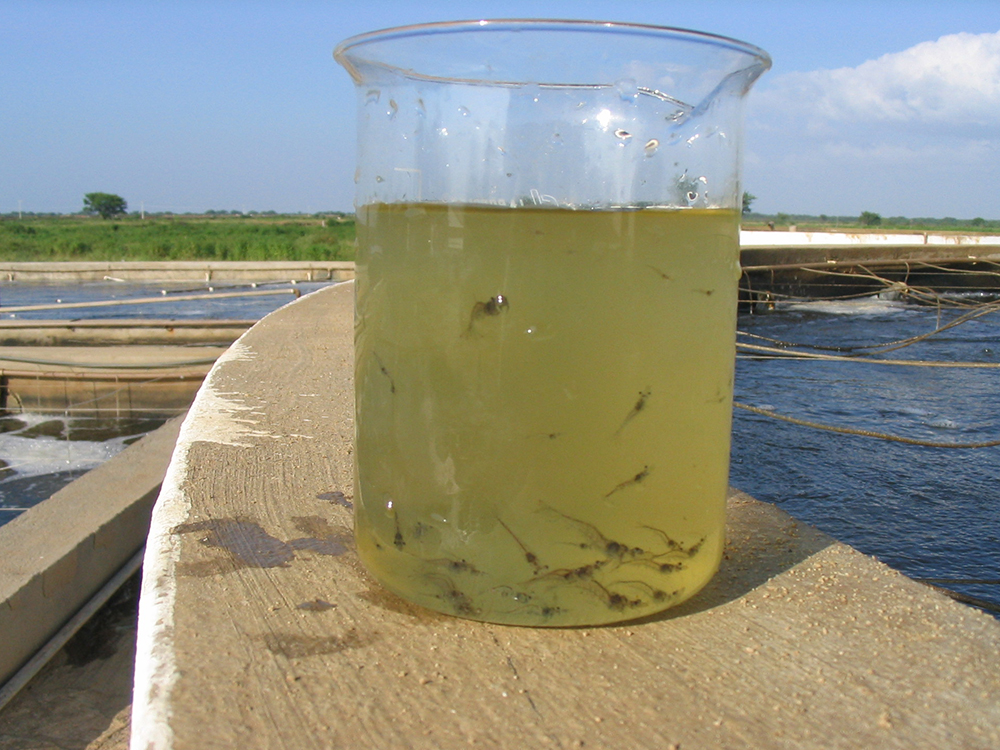
Health & Welfare
Building a better shrimp nursery, part 1
Shrimp nursery systems offer an important opportunity to increase profits. Properly designed and operated nurseries are highly biosecure facilities to grow postlarvae at very high densities.
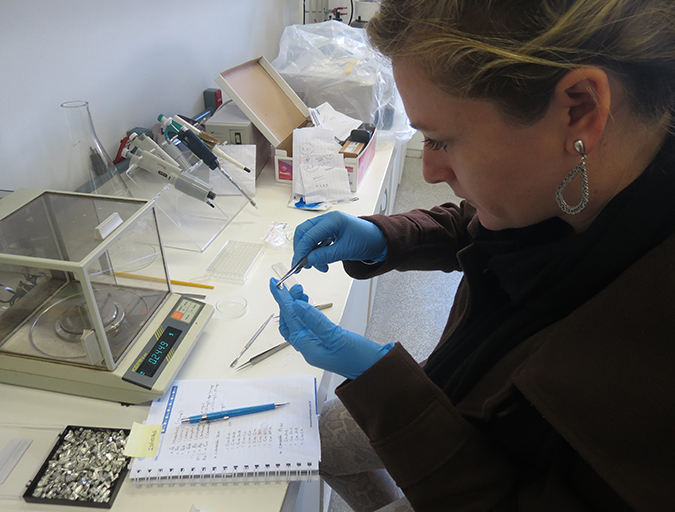
Aquafeeds
Biofloc consumption by Pacific white shrimp postlarvae
The stable isotopes technique with δ13C and δ15N can be used to determine the relevance of different food sources to shrimp feeding during the pre-nursery phase of Litopenaeus vannamei culture. During this trial, different types of commercial feed, microalgae, Artemia sp. nauplii and bioflocs were used as food sources.
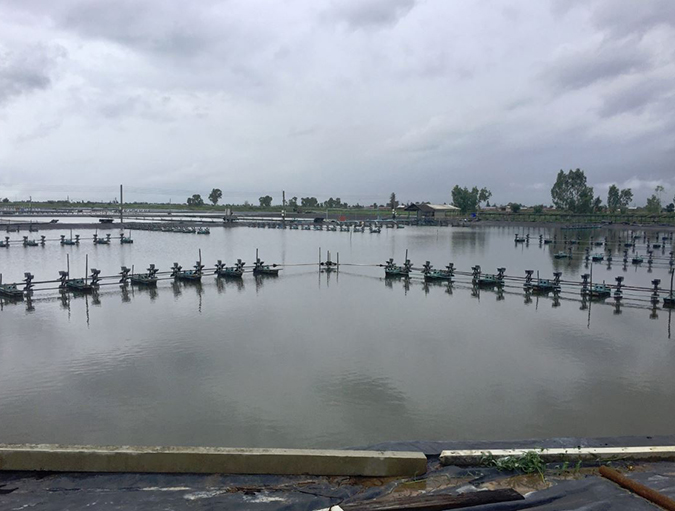
Health & Welfare
Aquamimicry: A revolutionary concept for shrimp farming
Aquamimicry simulates natural, estuarine production conditions by creating zooplankton blooms as supplemental nutrition to the cultured shrimp, and beneficial bacteria to maintain water quality. Better-quality shrimp can be produced at lower cost and in a more sustainable manner.
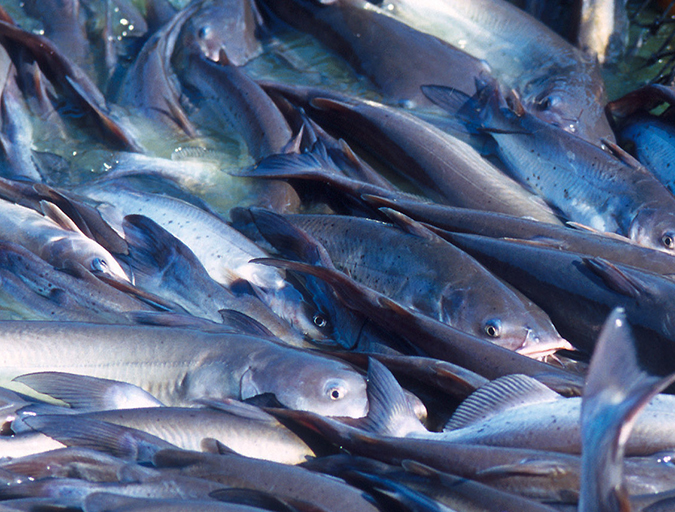
Intelligence
Biofloc technology production promising in temperate zones
A study was conducted to assess the feasibility to grow Channel catfish (Ictalurus punctatus) in an outdoor biofloc system during winter in a temperate zone. High biomasses of market-size channel catfish were successfully maintained through the winter with high survival and in good condition in both treatments.



